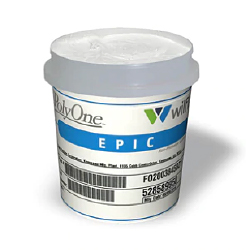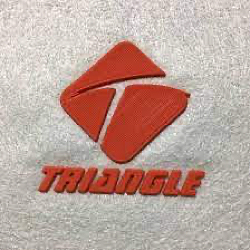With the popularity of athletic garments in today’s fashion trends, print shops are seeing stretchy substrates make their way through the door. Printing jobs like cheer uniforms, team jerseys or workout gear are on the rise. There are several things to consider about the garments themselves and how you plan to tackle them.
First you must know the material you’re working with. Is the garment made of nylon, polyester, spandex, lycra, or a combination of these substrates? Does the garment have a sublimated design on it before decorating?
Getting to know the material is important because it sets the mood for the rest of the job. Knowing the substrates you’re going to print on will give you an idea of cure time and whether you’ll be fighting dye migration.
Once you know what you’re working with, you need to choose how you’re going to get the job done. Nylon bonding agents, plastisol with stretch additive, and silicone ink are just a few of the options you might consider when printing on stretchy fabrics.

Stretch Additives
Choosing a stretch additive to add to plastisol is an option but adding too much stretch additive could reduce the opacity of the ink. Only add one to five percent stretch additive to retain the ink’s opacity. Stretch additives can be used as an under-base to help improve the stretch of the inks printed on top. Best results using a stretch additive are when using it with an athletic ink.
Plastisol Ink
If printing on nylon and want to use plastisol ink, you must consider purchasing a nylobond additive. Nylobond works as an adhesive for the ink, working like a glue to keep the ink on the garment, but you run the risk of the ink cracking. Another downside to using this method is the mixture must be applied immediately after mixing. Choosing to print this way also reduces the viscosity of the ink.

Silicone Inks
Another option is using silicone inks. Silicone offers a soft hand-feel, durability and flexibility compared to the last two options. You also have no worries about cracking after it is printed.
Silicone ink is ideal for printing on stretchy garments, but it is expensive. You also must follow guidelines to mix the toner with a catalyst or base depending on the type of look you are going for. One of the benefits of silicone is that it cures at a lower temperature compared to plastisol. This is ideal for printing on polyester since the cure window is around 270 degrees.
Silicone ink is great to use when printing on garments that have a sublimated design on the garment. This will help cover the sublimated design on the garment, so you get a nice print without any ghosting come through the screen-printed area.
As always, consult with your ink supplier for the ink series for printing on stretchy fabrics. It’s important to do your homework on all the new textile inks on the market and develop a strategy to use this technology in your apparel-printing business.
